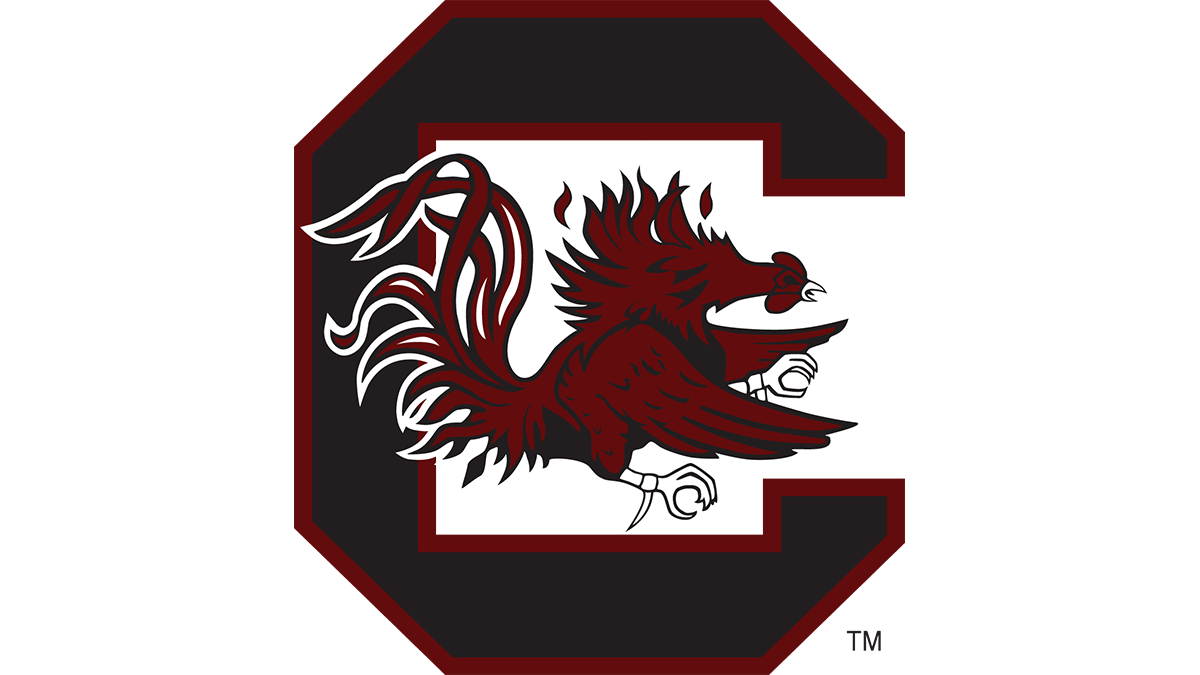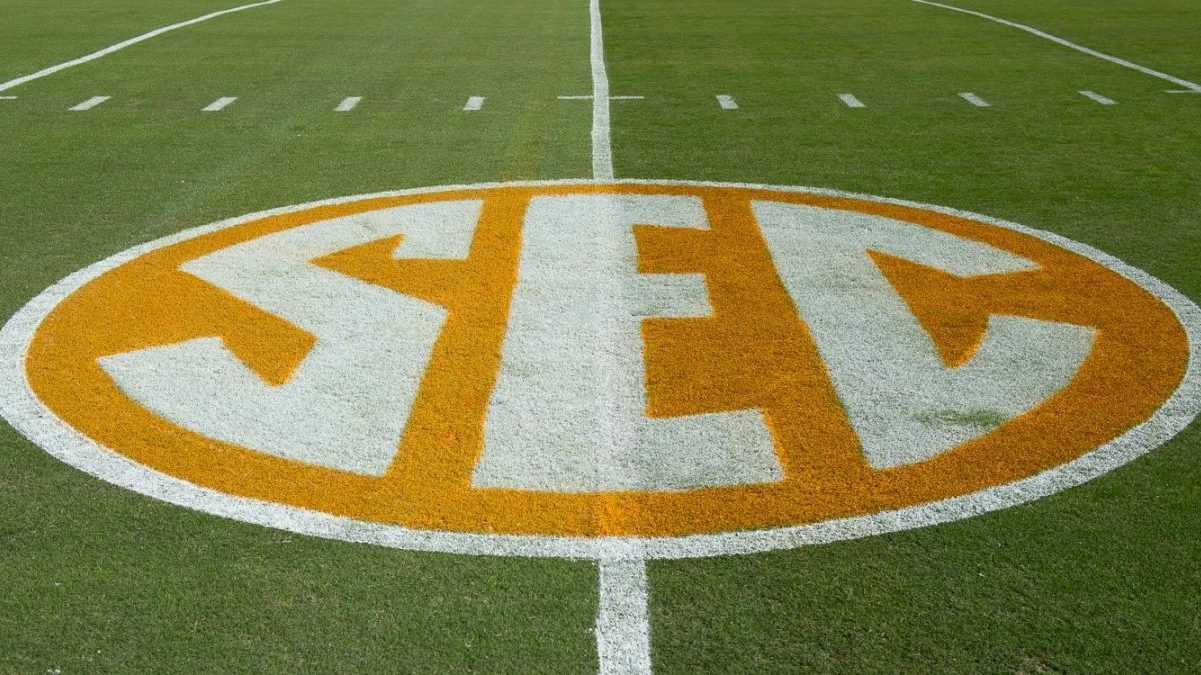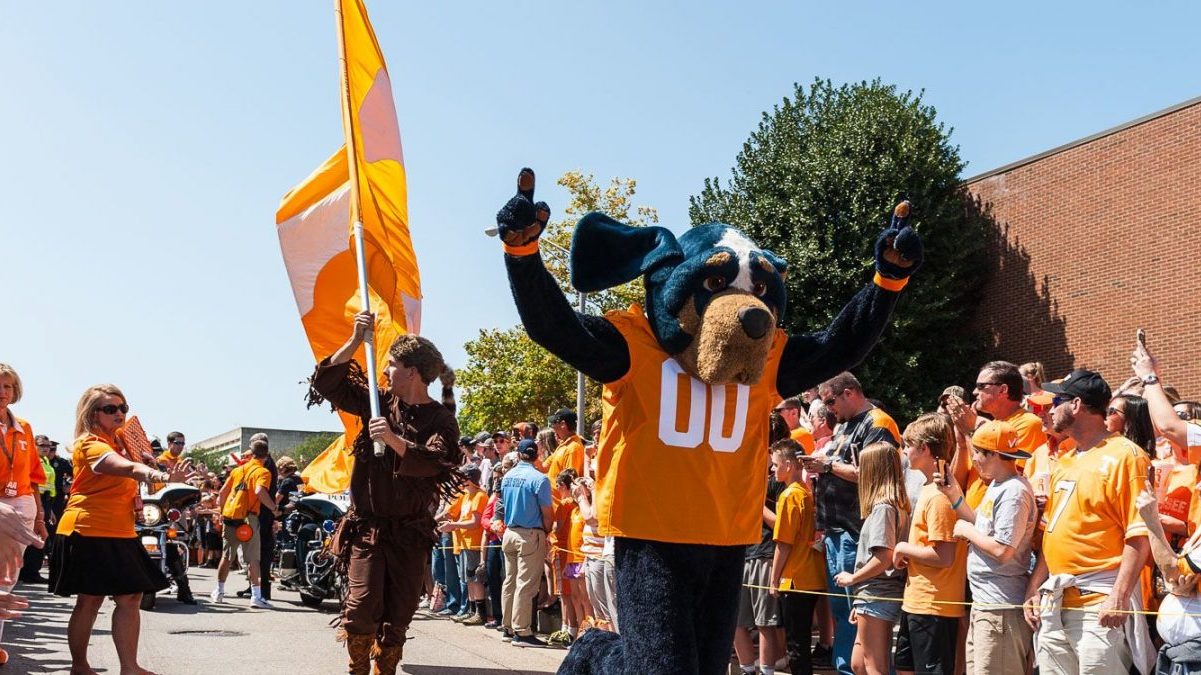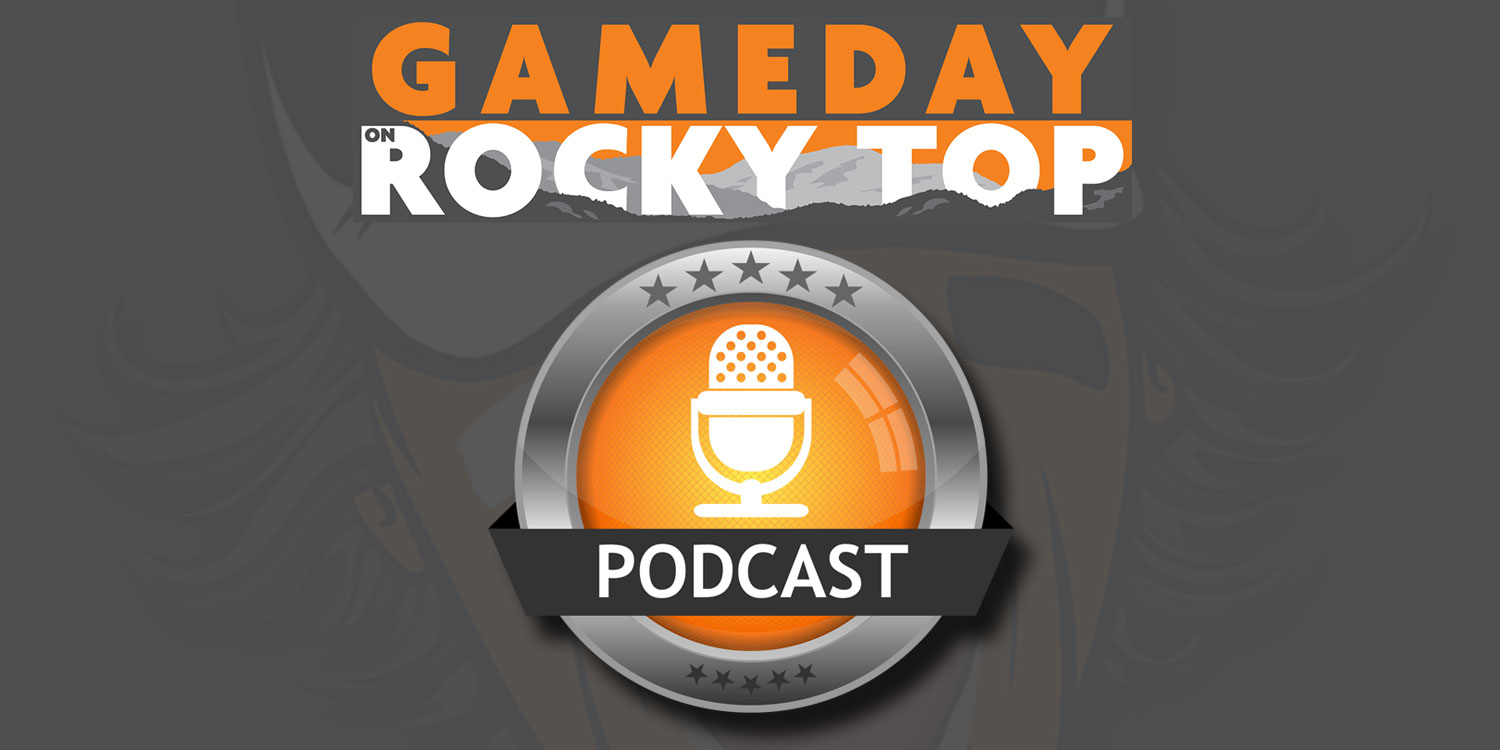Category Archives: Football
2021 Expected Win Total Machine – Missouri
2021 Expected Win Total Machine – Kentucky
2021 Expected Win Total Machine – Georgia
2021 Expected Win Total Machine – Florida
2021 SEC Projected Records and Standings
In case you missed it last Friday, we’re inviting our readers behind the curtain to participate in the production of this year’s annual preseason football content. For the next week or two, we’ll be giving you an opportunity to weigh in on the projected records and standings for the SEC.
The end goal here is projected standings for each division of the SEC, but we don’t want to just jump to the finish line on the question. Instead, we’ll walk through the schedule for each team and make an educated guess as to the outcome of each game. That gives us each team’s projected record (and also any necessary head-to-head tiebreakers) from which we then determine projected division standings.
Regular readers will recognize the Expected Win Total Machine below. It doesn’t ask for wins and losses, but instead your level of confidence for a win in the form of some number out of 100. Think of it as a percentage (but don’t include a percentage symbol in your answer or the machine will complain). For instance, if you feel really good about Tennessee beating Bowling Green in the season opener, you’ll put something like 90 or 95 in the Bowling Green input field. If you feel really bad about Tennessee’s chances against Alabama, you’ll put something like 5 or 10 next to that game. When you’re finished, hit the submit button, and the machine will spit your projected win total back at you. It will also log your game-by-game entries into our system so we can come up with community numbers we’ll use for the preseason content.
We’ll compile that data into a fan expected win total and include that number in the preseason content. We’ll also convert it into expected wins and losses and use it to come up with projected records for each SEC team and standings for each division.
This is a Vols community, so we’re going to start with Tennessee just to get our feet wet. Here’s how it’s going to work:
Let’s get started. Here’s the link to the first form. We will add the other teams periodically over the next week or so.
If you haven’t weighed in on the Power Rankings yet, you can do that here:
2021 Expected Win Total Machine – Tennessee
Help us write a Vols football preseason publication: 2021 Power Rankings
Yes, 2021 is a Season of Change for the Tennessee Volunteers football program, and we’re turning to face the strange ourselves with this year’s preseason publication. We’re inviting you along for the process, asking for input on several key pieces of content.
First up is our Preseason College Football Power Rankings. We don’t usually publish these in any form, but use them primarily as a building block for much of the rest of the publication. Previews, projected records and standings, the stock watch, and other content depend to some degree on the Power Rankings.
The Power Rankings are compiled first using a formula, and then subjected to human overrides, which is where we (and you) come in.
Here’s the first draft, the formula-only results. It’s a baseline, and now it’s up to us to tell it where it’s wrong.
| 1 | Alabama |
| 2 | Clemson |
| 3 | Oklahoma |
| 4 | Georgia |
| 5 | Ohio State |
| 6 | Texas A&M |
| 7 | Florida |
| 8 | Oregon |
| 9 | Wisconsin |
| 10 | North Carolina |
| 11 | Cincinnati |
| 12 | Notre Dame |
| 13 | Texas |
| 14 | USC |
| 15 | Iowa |
| 16 | Iowa State |
| 17 | Penn State |
| 18 | Washington |
| 19 | BYU |
| 20 | Miami (Florida) |
| 21 | Indiana |
| 22 | Arizona State |
| 23 | Utah |
| 24 | Auburn |
| 25 | Oklahoma State |
| 26 | Coastal Carolina |
| 27 | Northwestern |
| 28 | Virginia Tech |
| 29 | Michigan |
| 30 | Mississippi |
| 31 | Louisiana-Lafayette |
| 32 | Nebraska |
| 33 | Minnesota |
| 34 | UCF |
| 35 | Appalachian State |
| 36 | LSU |
| 37 | West Virginia |
| 38 | TCU |
| 39 | Louisville |
| 40 | Liberty |
| 41 | Pittsburgh |
| 42 | UCLA |
| 43 | Maryland |
| 44 | Purdue |
| 45 | SMU |
| 46 | Tennessee |
| 47 | Buffalo |
| 48 | Kentucky |
| 49 | North Carolina State |
| 50 | Arkansas |
| 51 | Memphis |
| 52 | Boise State |
| 53 | Mississippi State |
| 54 | UAB |
| 55 | Tulsa |
| 56 | Virginia |
| 57 | San Jose State |
| 58 | Tulane |
| 59 | Ball State |
| 60 | Baylor |
| 61 | Missouri |
| 62 | Stanford |
| 63 | Michigan State |
| 64 | San Diego State |
| 65 | Houston |
| 66 | Washington State |
| 67 | Colorado |
| 68 | Georgia Tech |
| 69 | Marshall |
| 70 | Kansas State |
| 71 | Western Michigan |
| 72 | Army |
| 73 | Toledo |
| 74 | Nevada |
| 75 | Troy |
| 76 | Boston College |
| 77 | California |
| 78 | Florida State |
| 79 | Georgia Southern |
| 80 | Wake Forest |
| 81 | Texas Tech |
| 82 | Oregon State |
| 83 | Air Force |
| 84 | South Carolina |
| 85 | Central Michigan |
| 86 | Ohio |
| 87 | Georgia State |
| 88 | Fresno State |
| 89 | Wyoming |
| 90 | UTSA |
| 91 | Illinois |
| 92 | Colorado State |
| 93 | Florida Atlantic |
| 94 | East Carolina |
| 95 | Western Kentucky |
| 96 | Rutgers |
| 97 | Navy |
| 98 | Arizona |
| 99 | Rice |
| 100 | Southern Mississippi |
| 101 | Duke |
| 102 | Kent State |
| 103 | Syracuse |
| 104 | Arkansas State |
| 105 | South Florida |
| 106 | Miami (Ohio) |
| 107 | Eastern Michigan |
| 108 | North Texas |
| 109 | Hawaii |
| 110 | Vanderbilt |
| 111 | Florida International |
| 112 | Temple |
| 113 | Northern Illinois |
| 114 | Kansas |
| 115 | Charlotte |
| 116 | Texas State |
| 117 | South Alabama |
| 118 | UNLV |
| 119 | Louisiana Tech |
| 120 | New Mexico |
| 121 | Middle Tennessee |
| 122 | Akron |
| 123 | Bowling Green |
| 124 | Louisiana-Monroe |
| 125 | Utah State |
| 126 | Massachusetts |
| 127 | UTEP |
| 128 | Old Dominion |
| 129 | New Mexico State |
| 130 | Connecticut |
Don’t let us over-influence you, but here are some of the teams we’re thinking may be ranked too high:
- Texas A&M
- Florida
- Oregon
- Wisconsin
- Texas
- BYU!
- Northwestern!
And here’s a list of teams that are currently looking too low to us:
- Iowa State
- Michigan
- Ole Miss
- Louisiana
- LSU
If you have any opinions, leave them below.
Face the strange: A season of change
Long-time readers know that our Tennessee football preseason publication has gone through many changes over the course of the 12 editions it’s been available. It’s had different names, different publishers, and different looks. It’s been on newsstands and not on newsstands. It’s been released in mid-July for the sake of accuracy and in mid-May for the sake of speed. It’s been packaged alone and with t-shirts or decals. It’s introduced four new head coaches and counting. Will Shelton and I have been involved in every edition, but that may be the lone constant (unless you’re one of those people who will point out that there are other constants, like the fact that every edition includes both words and pictures.)
It’s difficult to pinpoint exactly where and when the train jumped the tracks for Tennessee Football, but this particular period — beginning with the sudden cessation of spring practice a year ago due to the pandemic, this offseason right here right now, and the prospect of a 2021 season with so many unknowns and unknowables — has to be one of the most difficult and weirdest periods of change in the storied history of a proud Tennessee football program.
As Inky Johnson says in that video up there, change is hard at first, messy in the middle, and beautiful in the end. We just didn’t know the process was going to take so long.
A 2021 fall already branded as a Season of Change seems like the perfect time to consider mixing things up a bit ourselves. Rather than just hitting repeat on the past, we’re going to look at everything with fresh eyes this year. The timing of the release date of the preseason publication may change. Publication format and distribution — whether we continue to pre-print for newsstands or go all-in on digital — will probably change. Some of the content may change. The constant will remain so: Will and I are still going to write and publish this thing this year. We and you will find out together what that looks like.
One thing we do already know is that we want to involve you — yes, you — in the creation of the content for the preseason publication. We want your input on our power rankings, predicted records and standings, stock watch, all-conference teams, Top 25, and whatever else makes sense. We’ll be the guide because we’ve been down this road many times before and we know the pitfalls. But we’ve never walked it with you, and this year, we’d like to invite you along. We wish we would have thought of it sooner.
It’s time to turn and face the strange. If you’d like to join us, get started by weighing in on the first rough draft of our 2021 College Football Power Rankings.











You must be logged in to post a comment.